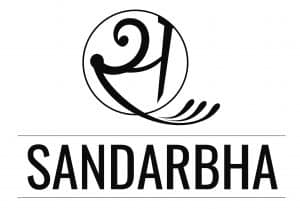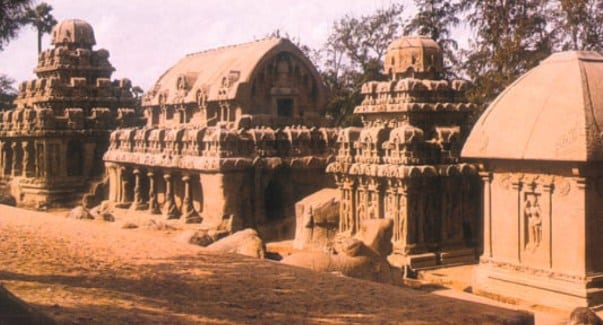The Iron Pillar
- The iron pillar is located at Mehrauli, Delhi.
- It is made of iron.
- It is 7.2m in height.
- It weighs over 3 tons.
- It was made about 1500 years ago. It has an inscription mentioning a ruler named Chandra who probably belonged to the Gupta dynasty.
- It has not rusted till date.
Buildings in brick & stone
Stupas (began to be built around 2300 years ago) have certain common features:
- Generally, there is a small box placed at the centre or heart of the stupa.
- This may contain bodily remains of the Buddha or his followers, or things they used, as well as precious stones, and coins.
- This box, known as a relic casket, was covered with earth. Later, a layer of mud brick or baked brick was added on top. and then, the dome-like structure was sometimes covered with carved stone slabs.
- Often, a pradakshina path was laid around the stupa surrounded with railings. Entrance to the path was through gateways. The railings and gateways were often decorated with sculpture.
- Devotees walked around it in a clockwise direction, as a mark of devotion.
- Many of the stone carvings for decorating the stupa were made about 2000 years ago.
Artificial caves and some of the earliest Hindu temples were also built at this time.
- Deities such as Vishnu, Shiva and Durga were worshiped in these shrines.
- Garbhagriha was the most important part of the temple, where the image of the chief deity was placed.
- Often, a shikhara or a tower was built on top of the garbhagriha to mark it out as a sacred place. (For example, in Bhitargaon (UP)).
- Mandapa was a hall where people could assemble.
- Some of the finest stone temples were built in the towns of Mahabalipuram and Aihole (Durga Temple built about 1400 years ago).
- Monolithic Temples at Mahabalipuram were carved out of a huge, single piece of stone. While brick structures are built up by adding layers of bricks from the bottom upwards, in this case, the stone cutters had to work from top downwards.
Paintings
- Ajanta is a place where several caves were hollowed out of the hills over centuries.
- Most of these were monasteries for Buddhist monks, and some of them were decorated with paintings.
- The colors were made of plants and minerals.
- They are vivid even after 1500 years.
Also Read: Class 6 Ch 11 History- New Empires & Kingdoms
Books
- A famous Tamil epic, the Silappadikaram, was composed by a poet named Ilango, around 1800 years ago. It is the story of a merchant named Kovalan, who lived in Puhar and fell in love with a courtesan named Madhavi, neglecting his wife Kannagi.
- The Tamil epic, Manimekalai, was composed by Sattanar around 1400 years ago. It is the story of the daughter of Kovalan and Madhavi.
- Kalidas wrote in Sanskrit.
- The Puranas were written down around this time. They contained stories about gods and goddesses, how they were to be worshiped, accounts about the creation of the world, and about kings.
- The Puranas were written in simple Sanskrit. Even women and Shudras, who were not allowed to study the Vedas, were allowed to hear them.
- The story of Mahabharata was an old one but was written down in its present form about 1500 years ago.
- Both the Puranas and the Mahabharata are supposed to have been compiled by Vyasa.
- Ramayana was written down by Valmiki in Sanskrit.
- Stories told by ordinary people are preserved in a collection of stories such as the Jatakas and the Panchtantras.
- Stories from the Jatakas were often shown on the railings of stupas and in paintings of Ajanta.
Aryabhata, a mathematician, and an astronomer wrote Aryabhatiyam in Sanskrit.
- He stated that day and night were caused by the rotation of the earth on its axis.
- He developed a scientific explanation for eclipses as well.
- He also found a way of calculating the circumference of a circle.











